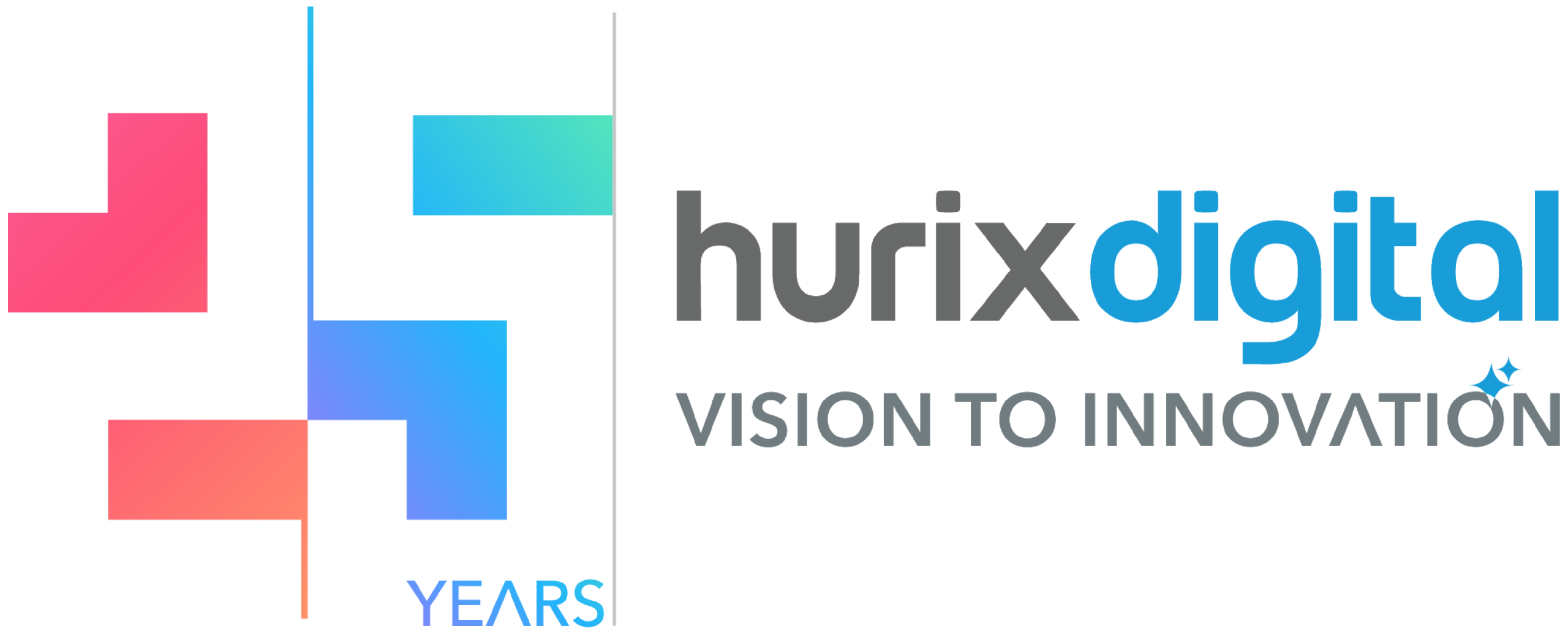
How Does XML Conversion Impact Your Content Accessibility and Compliance?
HTML and XML are both markup languages used to structure and display content on the web. However, HTML is primarily used for creating web pages, while XML is used for storing and transporting data. As a result, converting between various formats and XML has become increasingly critical in today’s digital landscape. The pandemic significantly impacted the global data conversion services market as the surge in data volume soared. With businesses and individuals shifting to digital platforms, the need for efficient data conversion services has skyrocketed.
XML has become a preferred format for data conversion, attributed to its ability to be compatible and scalable across various systems and platforms. It can also handle complex data structures, making it the go-to choice for many organizations.
Table of Contents:
- What is XML Conversion?
- Why Convert to XML? Key Benefits
- Types of XML Conversion
- How to Convert HTML to XML Efficiently
- Converting XML to ePUB: A Step-by-Step Guide
- Converting Standard XML to Customized XML: 5 Essential Steps
- Best Practices for Error-Free XML Data Migration
- XML Conversion Tools and Methods: Choosing the Right Approach
- Conclusion
What is XML Conversion?
XML (eXtensible Markup Language) is a text-based markup language derived from SGML (Standard Generalized Markup Language). The XML format cleverly executes data storage in a format that is both machine and human-readable. The idea behind the creation of the XML file format was largely to store and transport data without being dependent on software/hardware tools.
XML conversion is the process of transforming data from one format into XML or converting XML data into other formats. This versatile, platform-independent format is used to store and transport data, making it widely adopted for data exchange and integration across different systems and applications. Whether you’re converting HTML to XML, XML to ePUB, or customizing standard XML schemas, the conversion process enables businesses to adapt their data representation to suit their particular requirements.
Why Convert to XML? Key Benefits
XML has become the cornerstone of modern data management and integration for several compelling reasons:
- Platform Independence: XML works seamlessly across different systems, applications, and platforms without requiring specific software or hardware tools. This universality makes it ideal for organizations working with diverse technology stacks.
- Structured Data Storage: XML provides a standardized format for exchanging data between many systems and applications. Its hierarchical structure makes complex data relationships easy to represent and understand.
- Human and Machine Readability: Unlike binary formats, XML files can be read and edited by both humans and machines, facilitating easier debugging, maintenance, and collaboration.
- Scalability and Flexibility: XML can handle complex data structures and scale according to your needs. As your data requirements grow, XML adapts without requiring fundamental changes to your infrastructure.
- Industry Standardization: Many industries have adopted XML-based standards (like ePUB for publishing), making it essential for interoperability and compliance.
- Enhanced Data Integration: XML simplifies the integration of data from multiple sources, enabling seamless communication between legacy systems and modern applications.
Types of XML Conversion
Understanding the different types of XML conversion helps you choose the right approach for your specific needs:
1. HTML to XML Conversion
Converting HTML to XML is useful when transforming web content into a structured format. While HTML focuses on presentation, XML emphasizes data structure and portability. This conversion is common when:
- Migrating web content to data management systems
- Creating structured databases from web pages
- Enabling data exchange between web applications
2. XML to ePUB Conversion
ePUB is the XML format for reflowable eBooks or digital books and publications standardized by the International Digital Publishing Forum (IDPF). An increasing number of publishers and authors are now transitioning to ePUB or electronic publication – a popular and globally accepted eBook format. The key advantage of the ePUB format is that it changes the layout of the content according to the device you read it on. Whether somebody is reading your eBook on a tablet or a smartphone, it will always be displayed correctly.
3. Standard XML to Customized XML
Sometimes the default XML format is insufficient to satisfy certain needs, making the conversion to a special XML format necessary. This allows businesses to adapt their data representation to meet industry-specific requirements or organizational standards.
4. XML Data Migration
This involves moving data from legacy systems or other formats into XML, ensuring data integrity and compatibility across platforms while maintaining error-free transitions.
How to Convert HTML to XML Efficiently
There are several ways to convert HTML to XML efficiently. Here are the most effective methods:
Method 1: Use an Online Converter
There are many online tools available that can quickly convert HTML to XML. Some popular options include Convertio, Online-Convert, and HTMLtoXML. These tools are easy to use and can handle large amounts of HTML code. They’re ideal for:
- Quick, one-time conversions
- Users without programming experience
- Small to medium-sized HTML files
Method 2: Use a Programming Language
If you have programming experience, you can write a script to convert HTML to XML. Python, for example, has several libraries such as BeautifulSoup and lxml that can be used for parsing and transforming HTML into XML. Other programming languages like Java and PHP also have libraries for this purpose.
Here is an example Python code using BeautifulSoup to convert HTML to XML:
from bs4 import BeautifulSoup
html = “<html><body><h1>Hello, World!</h1></body></html>”
soup = BeautifulSoup(html, “html.parser”)
xml = soup.prettify()
print(xml)
This approach offers:
- Full control over the conversion process
- Ability to handle complex transformations
- Automation capabilities for batch processing
- Custom error handling and validation
Method 3: Use XSLT
Extensible Stylesheet Language Transformations (XSLT) is a language used for transforming XML documents into other formats, including HTML. However, it can also be used in reverse to convert HTML to XML. XSLT is a powerful tool for converting HTML to XML, but it requires some knowledge of the language and XML schema.
XSLT is particularly useful when:
- You need to apply complex transformation rules
- Working with standardized conversion patterns
- Maintaining consistency across multiple conversions
Converting XML to ePUB: A Step-by-Step Guide
The XML to ePUB conversion process involves several critical stages to ensure your digital publication is properly formatted and accessible across devices. The XML to ePUB conversion flow is as follows:
Step 1: Receive and Prepare Input XML Documents
Receiving input XML documents and files from their respective sources. In case the original document is in a paper format (such as hard copies or a book), the first step includes scanning the documents/files.
Step 2: OCR Processing and Proofreading
The second step of the process involves proofreading and OCR processing of documents to ensure accuracy and readability.
Step 3: Preprocessing and Extraction
Once done, preprocessing begins to extract the relevant portions of documents required for the next stages. This includes:
- Identifying chapter breaks and sections
- Extracting metadata (title, author, publisher information)
- Separating text content from formatting elements
- Identifying images, tables, and special content
Step 4: Structure Mapping
Map the XML structure to ePUB specifications, ensuring:
- Proper content hierarchy
- Navigation elements (table of contents)
- Metadata compliance with ePUB standards
Step 5: Content Transformation
Transform the XML content into ePUB-compatible XHTML, applying:
- Responsive design principles
- Device-agnostic formatting
- Accessibility features
Step 6: Packaging and Validation
Create the final ePUB package and validate it against ePUB standards to ensure compatibility across reading devices and platforms.
Converting Standard XML to Customized XML: 5 Essential Steps
XML file conversion is a crucial process in various industries. However, there are times when the default XML format is insufficient to satisfy certain needs, making the conversion to a special XML format necessary.
Step 1: Analyze the Standard XML File
The first step is to analyze the structure and content of the standard XML file to determine changes that need to be made for XML file conversion. You need to identify the elements and attributes in the standard XML file that you want to modify, remove, or add to create the customized XML file.
Key Analysis Activities:
- Review the existing XML schema and structure
- Identify elements that need modification
- Document attributes requiring changes
- Note any missing elements needed for customization
Step 2: Define the Customized XML Schema
Based on the analysis of the standard XML file, you need to define the schema of the customized XML file. The schema defines the structure of the XML file, including the elements, attributes, and their relationships. You can use a schema language such as XML Schema, RelaxNG, or DTD to define the schema and convert it to an XML file.
Schema Definition Considerations:
- Business requirements and use cases
- Industry standards and compliance needs
- Data validation rules
- Relationship hierarchies between elements
Step 3: Transform the Standard XML File
Once you have defined the schema of the customized XML file, you need to use an XML transformation tool to convert the standard XML file into the customized format. This transformation process involves:
- Mapping Elements: Creating correspondence between source and target elements
- Applying Business Rules: Implementing custom logic for data transformation
- Handling Exceptions: Managing edge cases and data anomalies
- Preserving Data Integrity: Ensuring no data loss during conversion
Step 4: Validate the Customized XML
After transformation, validate the customized XML file against your defined schema to ensure:
- All required elements are present
- Data types are correct
- Relationships are properly maintained
- No structural errors exist
Step 5: Test and Deploy
Conduct thorough testing of the customized XML in your target environment:
- Integration testing with dependent systems
- Performance testing with realistic data volumes
- User acceptance testing
- Documentation of the customization process
Best Practices for Error-Free XML Data Migration
For a smooth and error-free data migration during XML conversion, following specific and advanced practices is indispensable. Here’s a detailed guide to help you overcome the complexities of XML data migration, ensure XML data integrity, and successfully complete the process.
1. Begin with a Detailed Pre-migration Audit
Before diving into the XML file conversion process, perform a comprehensive audit of the source data. This audit should include:
- Data Quality Assessment: Identify inconsistencies, duplicates, and errors in source data
- Volume Analysis: Understand the scale of data to be migrated
- Dependency Mapping: Document relationships between data elements
- Risk Identification: Highlight potential migration challenges
2. Put Into Practice Data Mapping and Transformation Rules
Establish clear data mapping and transformation rules that define:
- How source data elements correspond to target XML elements
- Transformation logic for data format changes
- Default values for missing data
- Handling of special characters and encoding
Create a comprehensive mapping document that serves as a reference throughout the migration process, ensuring consistency and reducing errors.
3. Perform Rigorous Testing and Validation
Testing is critical for error-free XML conversion. Implement a multi-layered testing approach:
- Unit Testing: Test individual transformation rules
- Integration Testing: Verify data flows correctly through the entire conversion pipeline
- Data Validation: Confirm accuracy and completeness of converted data
- Performance Testing: Ensure the conversion process meets time and resource requirements
Use automated validation tools to check XML syntax, schema compliance, and data integrity.
4. Utilize Version Control and Documentation
Maintain version control throughout the conversion process:
- Track changes to transformation scripts and schemas
- Document decisions and rationale
- Maintain rollback capabilities
- Create audit trails for compliance
This practice ensures you can trace issues back to their source and maintain a clear history of the migration process.
5. Finish Up with Post-migration Validation and Monitoring Strategy
After completing the migration, implement ongoing monitoring:
- Data Reconciliation: Compare source and target data to ensure completeness
- Performance Monitoring: Track system performance with migrated data
- User Feedback: Gather input from stakeholders on data accuracy
- Continuous Improvement: Document lessons learned for future migrations
XML Conversion Tools and Methods: Choosing the Right Approach
Selecting the appropriate tools and methods for XML conversion depends on several factors:
For Simple, One-Time Conversions:
- Online converters (Convertio, Online-Convert, HTMLtoXML)
- Browser-based tools
- No installation required
For Complex, Recurring Conversions:
- Programming libraries (Python’s BeautifulSoup, lxml)
- Enterprise conversion platforms
- Custom-built solutions
For Standardized Transformations:
- XSLT processors
- Schema-based conversion tools
- Industry-specific conversion software
For Large-Scale Enterprise Migrations:
- Professional data migration services
- Dedicated XML management platforms
- Automated conversion pipelines with monitoring
Conclusion
XML conversion is a critical capability in today’s data-driven business environment. Whether you’re converting HTML to XML for better data structure, transforming XML to ePUB for digital publishing, or customizing XML schemas for specific business needs, following best practices ensures error-free, efficient conversions.
The key to successful XML conversion lies in thorough planning, rigorous testing, and continuous validation. As the data conversion services market continues to grow, organizations that master XML conversion will be better positioned to leverage their data assets, ensure interoperability, and maintain a competitive advantage.
At Hurix Digital, we provide comprehensive XML conversion services. We use cutting-edge technologies and best practices to help you explore the full potential of your data assets.
Get in touch with us today!

Vice President – Content Transformation at HurixDigital, based in Chennai. With nearly 20 years in digital content, he leads large-scale transformation and accessibility initiatives. A frequent presenter (e.g., London Book Fair 2025), Gokulnath drives AI-powered publishing solutions and inclusive content strategies for global clients
 Upcoming Masterclass | Build an Army of Brand Evangelists using Training & Development | November 20th, 8:30 AM PDT | 11:30 AM EDT | 10:00 PM IST
Upcoming Masterclass | Build an Army of Brand Evangelists using Training & Development | November 20th, 8:30 AM PDT | 11:30 AM EDT | 10:00 PM IST

